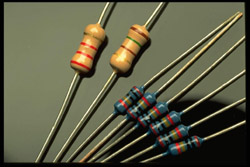Towards a better understanding of high temperature superconductivity
In 1986 new novel materials were developed that possessed the remarkable property of becoming superconductors at temperatures as “high” as 100 K (-173 C) and above. Before this period superconductivity was only observed at extremely low temperatures, namely a few degrees above absolute zero (0 K or –273 C), i.e. the lowest temperature that nature allows. A super-conductive material shows zero resistance. Currents in closed super-conductive circuits with no batteries present persist for weeks without any experimental diminution. The only drawback being that the whole circuit must be maintained at very low temperatures. However, there is an enormous difference between close to 0 K and 100 K. An explanation of “ordinary” superconductivity exists, although one for high temperature superconductivity is still lacking. It seems that the two phenomena, even though they manifest themselves in a similar way, the underlying mechanisms that produce them are different. The current project sheds light on yet another peculiar effect that both super-conductive and HTS materials exhibit, the so-called Josephson effect. Brian Josephson, a Welsh physicist, at the age of 22, theoretically predicted that an electric current would flow between two superconductors that are separated by a thin insulating layer. Soon afterwards came the experimental demonstration of his argument. The above configuration actually exists within the unit cell of HTS materials, where the highly conducting CuO2 planes are separated by insulating material. The study of the effect is opening up the way to new technological advances and there exists the prospect of using HTS materials for detectors and generators of sub-millimeter radiation.



